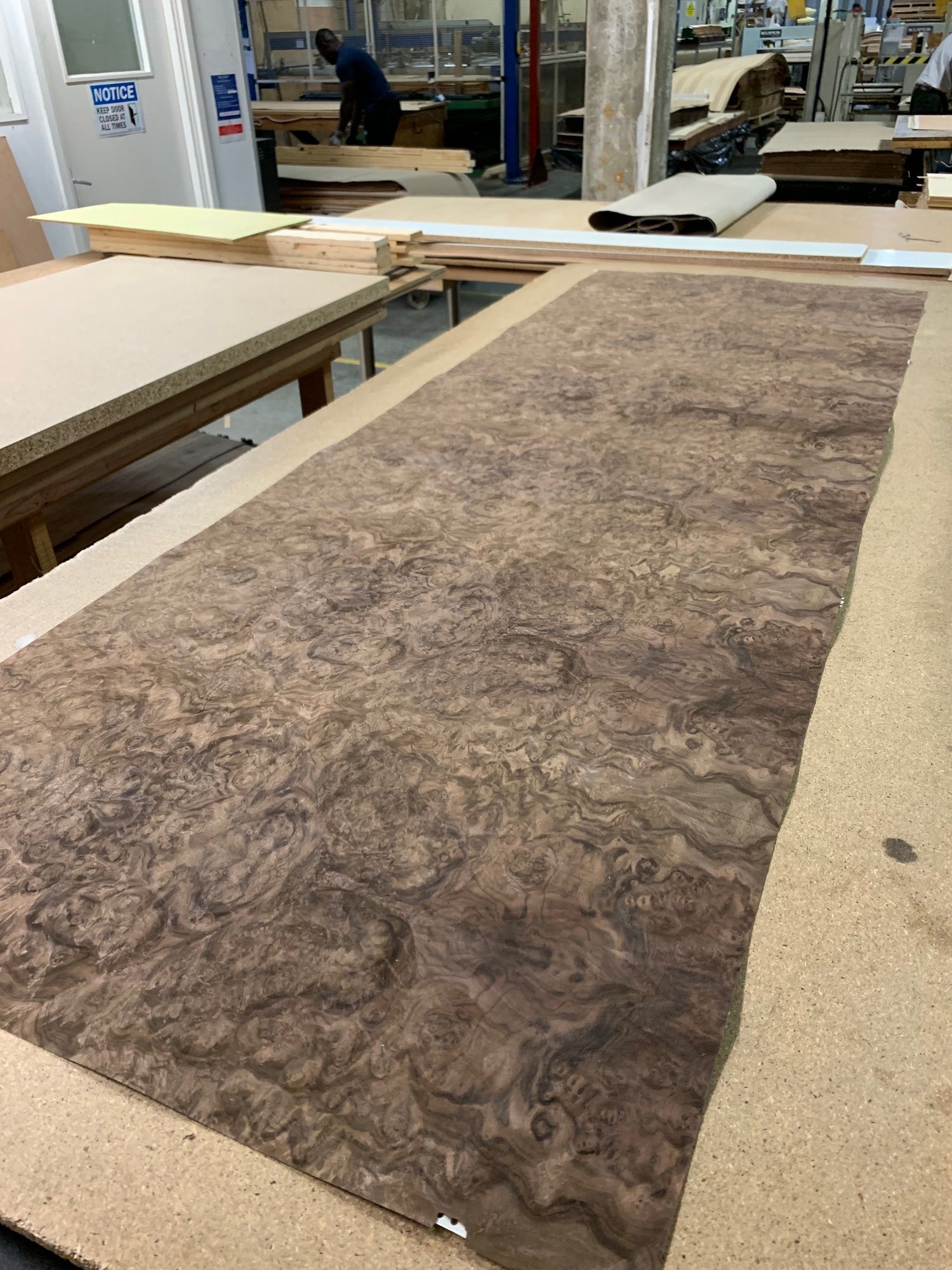Walnut burl veneer is a decorative wood veneer made from the burl wood of the walnut tree (Juglans regia or Juglans nigra). Burl wood is highly prized for its unique and intricate grain patterns, which include swirls, knots, and irregular growths. These distinctive patterns make it a popular choice for adding visual interest and elegance to furniture, cabinetry, and other woodworking projects.
The production of walnut burl veneer involves several steps:
-
Burl Harvesting: Burl wood is not found throughout the entire tree but typically forms as irregular growths or knots near the base of the trunk or at the tree's root system. Harvesting burls involves carefully cutting them from the tree while preserving as much of the burl as possible. It's essential to minimize damage to the surrounding wood.
-
Slicing: Once harvested, the burl is cut into thin sheets or slices using specialized equipment such as a veneer slicer or rotary cutter. These slices are typically very thin, often less than 1/16 of an inch (1.6 mm) thick.
-
Drying: The sliced burl veneer is then dried to reduce moisture content. This drying process is crucial to prevent warping, cracking, or other deformations that can occur in the finished veneer.
-
Backing: To enhance the stability and durability of the veneer, it is often backed with a substrate material, such as paper, fabric, or wood. The backing provides support and prevents the veneer from splitting or delaminating.
-
Sanding and Finishing: After backing, the veneer is sanded to achieve a smooth and even surface. Depending on the desired finish, the veneer may be further treated with stains, dyes, or protective coatings to enhance its appearance and protect it from wear and tear.
-
Cutting and Assembly: The veneer sheets are cut into specific shapes and sizes as needed for various woodworking projects. They can be applied to furniture surfaces, cabinet doors, or other wooden structures using adhesive or veneer glue.
Walnut burl veneer is renowned for its rich, dark color and intricate grain patterns, making it a popular choice for high-end furniture and interior design. It adds a touch of natural beauty and luxury to a wide range of applications, from traditional to contemporary styles. Properly cared for, walnut burl veneer can retain its beauty and durability for many years.





Leave a comment
All comments are moderated before being published.
This site is protected by reCAPTCHA and the Google Privacy Policy and Terms of Service apply.